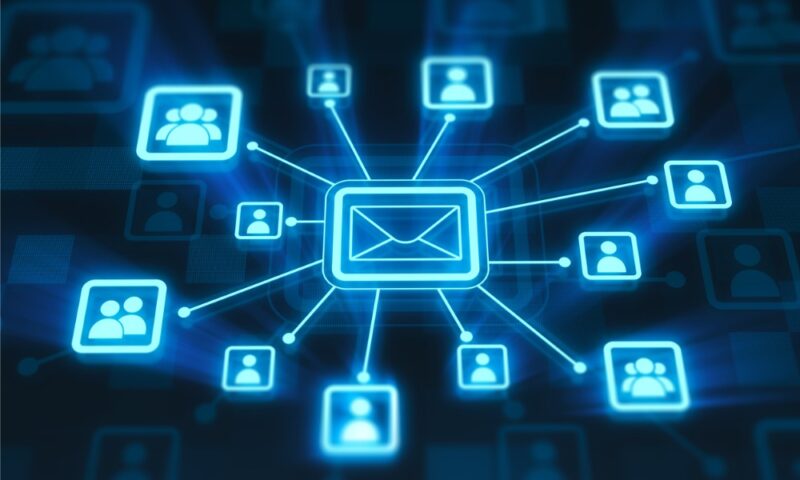In an increasingly competitive app market, finding effective ways to promote your mobile app is crucial for its success. One of the most powerful tools at your disposal is email marketing. Despite the rise of social media and other digital marketing channels, email marketing remains a highly effective way to engage with your audience, build relationships, and drive app downloads. In this blog, we’ll explore how to leverage email marketing to promote your mobile app successfully.

Table of Contents
Toggle1. Build a Targeted Email List
Before you can effectively promote your app through email, you need a targeted email list. This involves collecting email addresses from individuals who are genuinely interested in your app’s niche or industry.
Tips for Building Your Email List:
- Create Landing Pages: Design attractive landing pages that offer value in exchange for email addresses. This could be a free guide, exclusive content, or early access to your app.
- Incorporate Sign-Up Forms: Add sign-up forms on your website, blog, and social media profiles. Ensure these forms are easily accessible and encourage visitors to subscribe.
- Leverage Social Media: Use your social media channels to promote your email sign-up. Consider running contests or offering discounts to incentivize sign-ups.
2. Craft Compelling Email Campaigns
Once you have a list of subscribers, it’s time to craft compelling email campaigns that will promote your mobile app effectively.
Key Elements of Effective Email Campaigns:
- Engaging Subject Lines: Your subject line is the first thing recipients see, so make it catchy and relevant. Use action verbs, pose questions, or create a sense of urgency to encourage opens.
- Personalization: Personalize your emails by addressing recipients by name and tailoring content based on their interests. Personalization increases engagement and makes your audience feel valued.
- Clear Call-to-Action (CTA): Your email should have a clear and prominent CTA that directs recipients to download your app. Use action-oriented language, such as “Download Now” or “Get Started Today.”
- Mobile-Optimized Design: Ensure your emails are mobile-friendly, as many users will read them on their phones. Use responsive design to create a seamless experience across devices.
3. Highlight App Features and Benefits
In your email campaigns, it’s essential to showcase the unique features and benefits of your mobile app. This helps potential users understand why they should download and use it.
Tips for Highlighting Features:
- Use Visuals: Incorporate high-quality images, GIFs, or videos to demonstrate your app’s functionality and appeal. Visual content can capture attention and convey information quickly.
- Share User Testimonials: Include quotes or testimonials from existing users to build credibility and show how your app has positively impacted their lives.
- Create Use Cases: Provide examples of how users can benefit from your app in real-life situations. This helps potential users visualize the value your app offers.
4. Segment Your Audience
Segmentation allows you to tailor your email campaigns to specific groups within your audience based on demographics, behavior, or preferences. This increases the relevance of your messages and enhances engagement.
Segmentation Strategies:
- Behavioral Segmentation: Group subscribers based on their interactions with previous emails, website visits, or app usage.
- Demographic Segmentation: Segment your audience based on age, gender, location, or interests to tailor your messaging accordingly.
- Engagement Level: Identify highly engaged users and those who haven’t interacted with your emails in a while. Create targeted campaigns for each group to re-engage or nurture them.
5. Automate Your Email Campaigns
Email marketing automation can save you time and improve the effectiveness of your campaigns. Automated emails can be triggered based on specific actions or timeframes.
Types of Automated Emails to Consider:
- Welcome Emails: Send a warm welcome email to new subscribers, introducing them to your app and its features.
- Onboarding Emails: Create a series of onboarding emails that guide new users through your app’s functionalities, helping them get started quickly.
- Re-engagement Campaigns: Target users who haven’t interacted with your app in a while with tailored campaigns to encourage them to return.
6. Monitor and Optimize Your Campaigns
To ensure your email marketing efforts are effective, it’s important to monitor key metrics and optimize your campaigns based on data insights.
Key Metrics to Track:
- Open Rates: Measure the percentage of recipients who opened your emails. A low open rate may indicate that your subject lines need improvement.
- Click-Through Rates (CTR): Track how many recipients clicked on your CTAs. This metric helps gauge the effectiveness of your content and CTAs.
- Conversion Rates: Monitor how many users downloaded your app after clicking through your email. This metric is crucial for measuring the overall success of your campaigns.
Tips for Optimization:
- A/B Testing: Conduct A/B tests on different elements of your emails, such as subject lines, CTAs, and visuals. This allows you to identify what resonates best with your audience.
- Feedback Loops: Encourage feedback from your subscribers. Ask them about their preferences and what type of content they’d like to receive.
Conclusion
Email marketing is a powerful tool for promoting your mobile app, allowing you to engage with potential users and drive downloads effectively. By building a targeted email list, crafting compelling campaigns, segmenting your audience, and monitoring your performance, you can create a successful email marketing strategy that supports your app’s growth. Remember, the key to success lies in delivering valuable content that resonates with your audience and encourages them to take action. Start leveraging email marketing today to boost your mobile app’s visibility and user base!


No responses yet